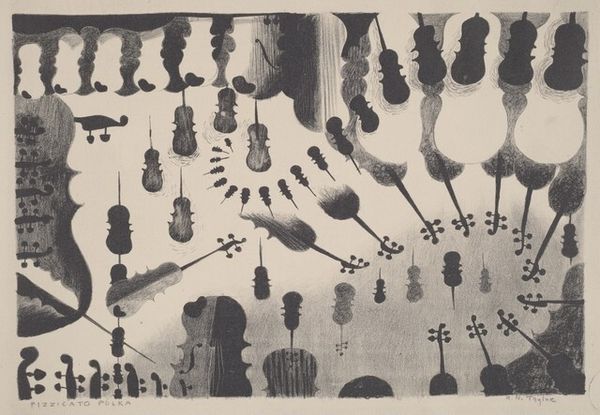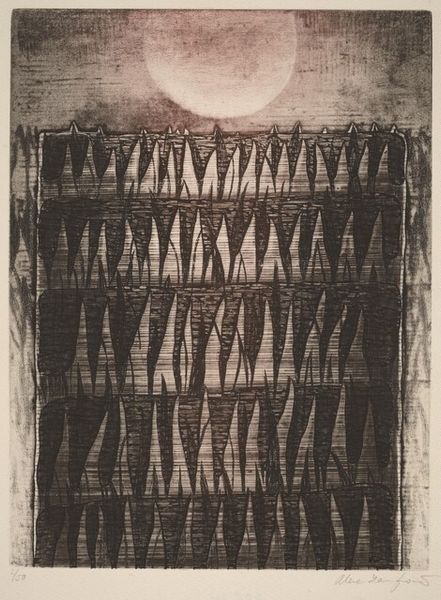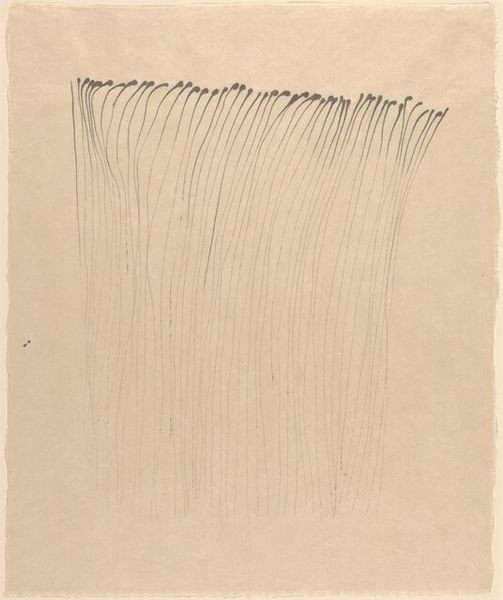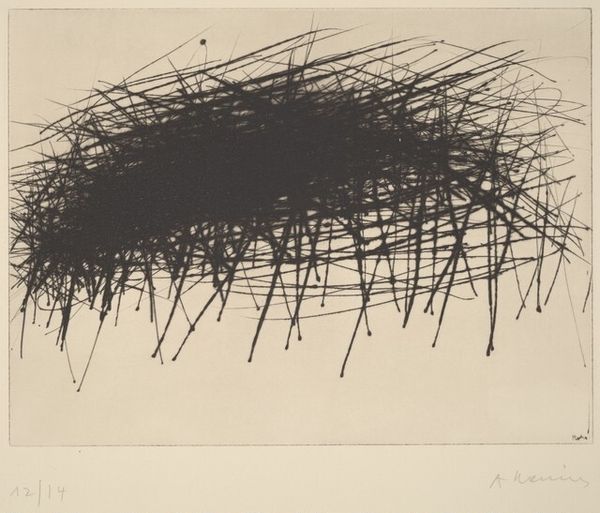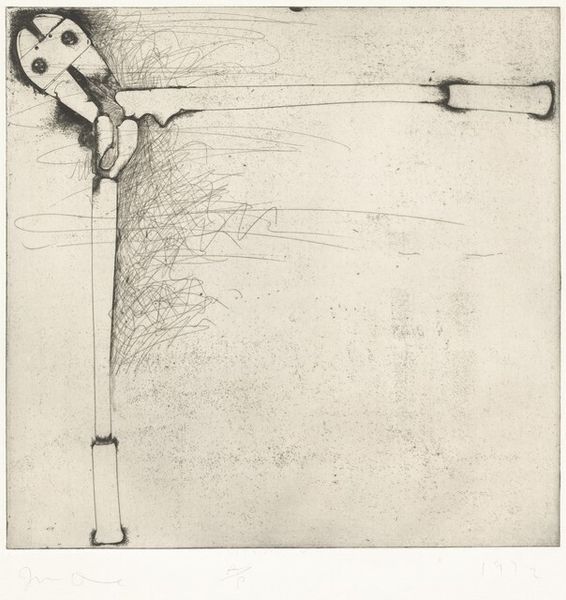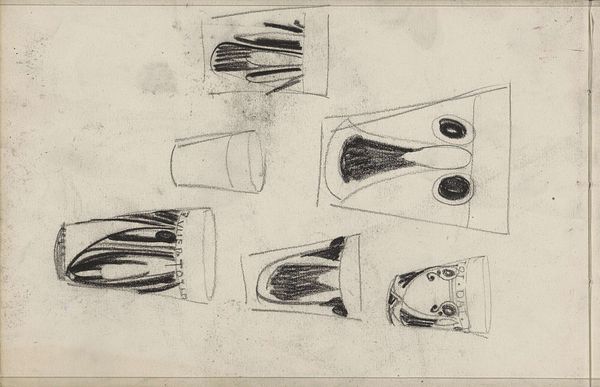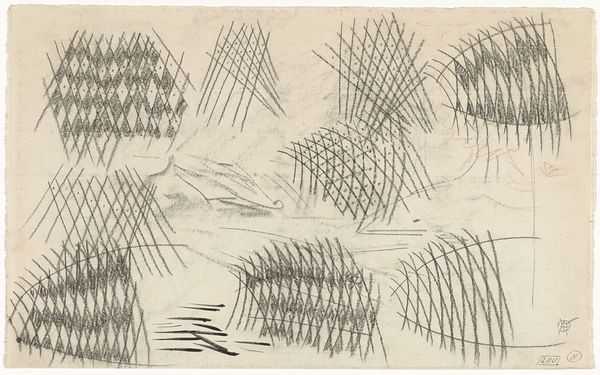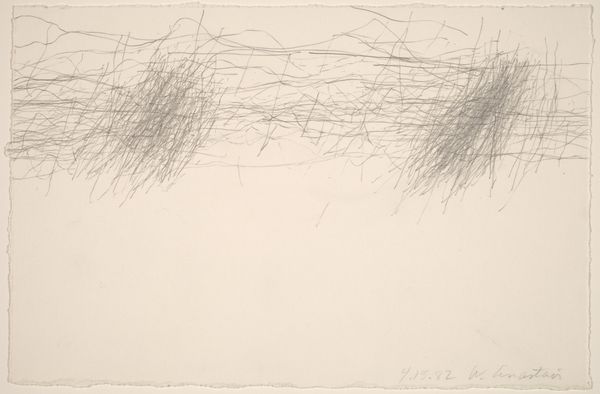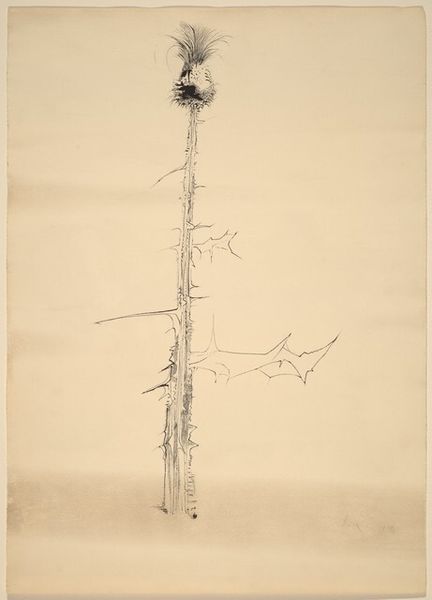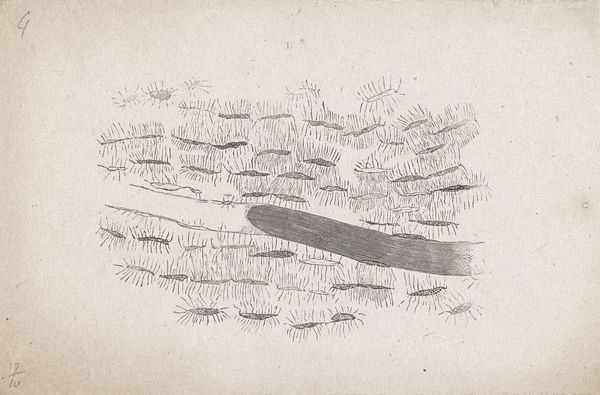
drawing, print, etching
#
drawing
# print
#
pen sketch
#
etching
#
geometric
#
monochrome
Dimensions: image: 59.21 × 81.28 cm (23 5/16 × 32 in.) sheet: 74.61 × 94.62 cm (29 3/8 × 37 1/4 in.)
Copyright: National Gallery of Art: CC0 1.0
Curator: Jim Dine's 1973 etching, "Five Paintbrushes (second state)," presents a lineup of brushes against a subtly textured background. There’s a formal, almost classical arrangement. Editor: It's so… honest. Like looking into a craftsman’s workshop. There's a humble, almost melancholy mood hanging about them; these brushes feel very lived-in. Curator: The medium enhances that feeling. Etching captures those tiny details – the wear on the handles, individual bristles. And look at how Dine uses the acid to bite into the metal; it mimics the way paint likely bit into these brushes over time. It's quite a poignant gesture, I think. Editor: Exactly. I see ghosts of colours clinging to them still. Each brush seems to possess its own personality, not just the uniform tool for a single creative process. Like the chunky one far right looks like it only ever knew greens and browns, for earth tones and heavy impasto. Curator: You’ve picked up on something essential: Dine's preoccupation with tools, with objects of daily life elevated to symbolic status. This period in the '70s saw him particularly interested in ideas of making, but he also had ongoing dialogues in his practice through many self portraits—think of the artist always coming back to reflecting on his own history of making. How do these tools shape us? How do we imbue meaning to simple things? Editor: Absolutely, there’s a relationship to utility here, to the labor, and love inherent to any studio. But at the same time, I keep picturing Dine meticulously cleaning and caring for these. These are intimate instruments, echoing human relationships, really. Curator: It also prompts one to ponder the artist’s relationship to abstraction versus representation. Dine is not after exact photorealism, but an essence. That incompleteness—the 'sketchiness' you might even call it—permits more space for imagination and individual perception. Editor: Ultimately, Dine gets me considering the marks I might wish to leave behind and the instruments, as unassuming as these, that will carry those into reality. What could my legacy be; what ghosts of past-projects will still cling to them in decades to come? Curator: An echo that’s truly testament to Dine’s lasting impact. Thanks for sharing that, your perspective casts the print in such a rich light.
Comments
No comments
Be the first to comment and join the conversation on the ultimate creative platform.
